
Golfers and greenkeepers are quite obsessed with the weather. This might be the case for any outdoor sport, but the weather becomes a large part of the conditions on the ground and that day’s play.
Whilst visiting a few golfing venues I’ve been finding out about the hard work going on to keep the courses in tip-top condition and what golfers will put up with to finish a round, especially if they are one up.
Storm Hector getting the better of the Hospitality tent in 2018 at Gullane.
Check the latest forecast for the British Open 2019 at Portrush
This year’s US masters bowed to the weather forecast and the last day’s timings were adjusted. It suited UK television viewers, with lightning storms and heavy rain forecast for later on Sunday. Continuing play on a Monday is not ideal, for audience shares and so advertising revenues. Tiger Woods had a sensational comeback with rain just arriving for the end of play.
Professionals will have to continue playing unless conditions are dangerous in very high winds, or windy enough that the ball will roll on the greens and of course if lightning is detected.

The Golfers
At a slightly more everyday level, there will be decisions of whether to go out or not from fair-weather golfers, what to wear, choice of club/swing and at times where to go to play.
I visited Gullane Golf Club and Dunbar Golf Club, both links courses in SE Scotland. Golf is played all year round, using winter greens and will attract players from the wetter west coast out of season. The lure of warmth and sunshine has long drawn golfers to the Algarve and Spanish resorts. Yet Americans come to the home of golf and other links courses for the scenery, the weather and the experience. Often a rather rugged, windy one. There was a large group from Sweden visiting, showing that weather is only comparable to what you are used to.
If you are more local you can pick and choose your day, if tee times are available. That may also depend on the hardiness of your partner, to cancel/delay or not. Some wouldn’t play in rain; others didn’t want too much wind. I asked about snow, thinking the closure would be assumed but the course manager at Dunbar, Paul Armour, laughed and said that “they would play if they could, golfers are mad!” He was worried about them ruining the turf.
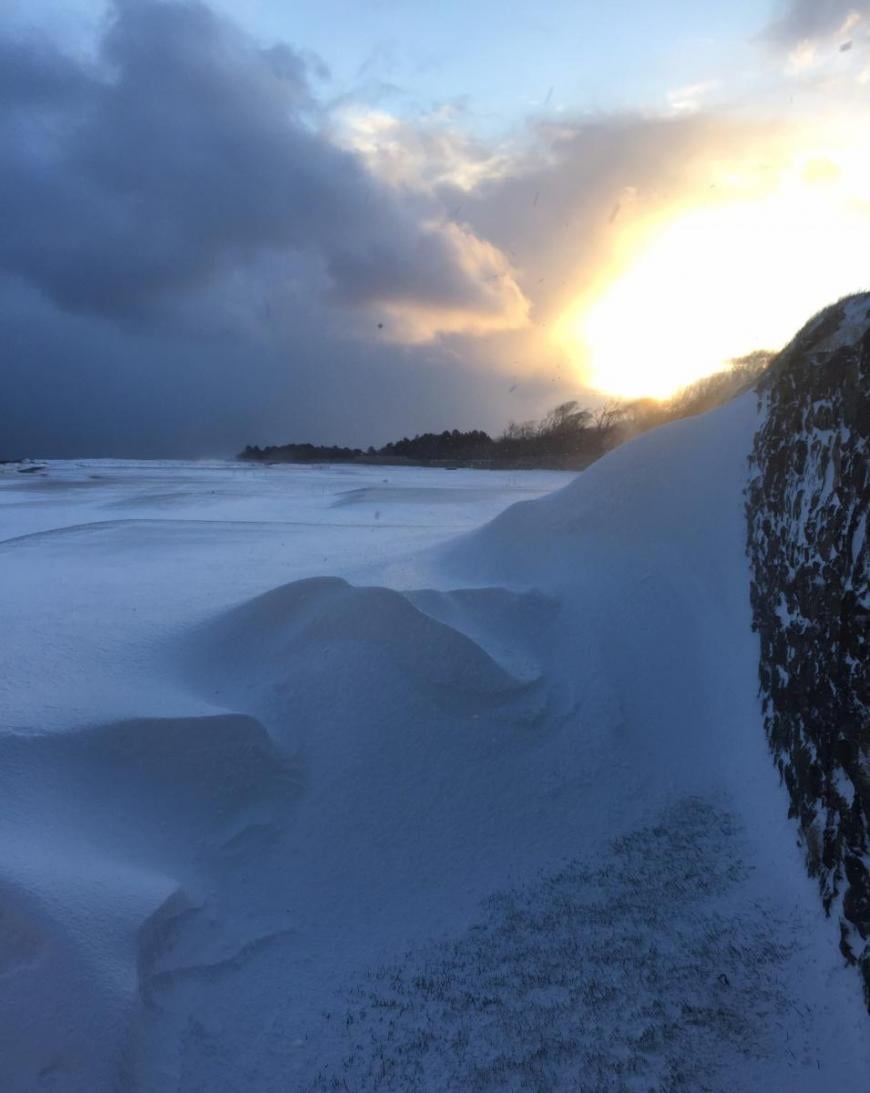
Stuart Bendoris, the golf services manager at Gullane explained that recently a group of strapping American lads had come over to play but struggled initially in the wind, as they were used to hitting the ball a long way but high. Local youngsters knew to keep the ball low. It’s all about adapting to the conditions.
"A bad day’s golf is better than a day’s ironing”
There was much hilarity and comment from the Gullane ladies who were heading out. Starter Alan Gray was asked by just about everyone coming into the Starting Hut about the conditions and the forecast.
Dressed for the weather: One hardy Gullane golfer and a fair-weather one
“We look at the weather all the time” Usually the first 9 are into the SW prevailing wind and the back 9 kinder with the wind at your back at Gullane. However, 2019 has seen a lot of easterly flow, which is chilly for the North Sea coasts. There was a lot of chat about hope, in the weather, that it was going to get better.
“ If the wind’s in the east, it will be there for a week at least” one lady quoted of her seafaring father.
Winds - If it’s windy, especially with strong gusts, timing will be a major factor along with the ability to adjust the shot. Gusts are the sudden short-lived winds, noticeably stronger than the mean/ongoing wind. Over water and long grass, you can see them approaching, with darkening on the surface. On the Netweather Golf forecast, it lists the mean wind speed forecast along with expected gust strength. Dunbar has a rule that if the mean wind speed is over 20mph then it doesn’t count against your handicap.
“We don’t golf in the rain, well, sometimes you have to”
Rain - Some people don't like to play if it is raining, but it is easy enough to get caught in a shower on an otherwise fine day. Understanding the forecast for showers can help your choice but won’t alter the actual weather.
The course at Dunbar comes to a headland and often attracts showers with a bit of wind convergence. If two areas of air come together, the air has to go somewhere, it lifts and that forcing upwards can result in the water content coming out of the rising air and a shower appears. You may have parts of the course which are more prone to a downpour than others. If your weather app is showing rain rain rain, then a change in wind direction and brighter/drier conditions, that will be a front, a band of rain and it will be hard to avoid. If it shows showers, the dark cloud, raindrop and sunshine symbol, then we are talking about risk. An area will have the potential to produce a shower, the rain from a convective cloud. These can vary from large cumulus clouds to a thunderstorm from a Cumulonimbus, with lightning and hail. Often you see a % sign from say 10% to 90% It could rain, or it might not and with showers, you might see it raining a mile or so away, but you manage to stay dry. Or the other way round of course!
The rain will affect conditions underfoot, your grip, your hair, the visibility and how the ball travels. The ball won’t roll as well on a wet green or travel as far in the air. It may affect your enjoyment of a round. Modern fabrics and clothing technology mean that golf wear, in all its colours, is hard wearing yet lightweight now. It has to be flexible but robust enough to put up with the UK weather and the hours outside for a full round.
Temperatures - Most weather apps show the air temperature, so a temperature that would be measured in the shade, sheltered from the wind. Alongside can be a Feels Like temperature which takes into consideration the wind strength and humidity. An air temperature of 16C (61F) can feel hugely different with a breeze and grey skies to a sheltered sunny spot.
The golfers tan - The look: no tan to mid-upper arm, then tan downwards, tanned neck and one hand. Also an abrupt sock tan with no tan on feet. The logo-ed golfing cap is very popular but doesn’t offer any UV protection to the back of your neck or ears. Sunscreen is needed. The advice is to apply sunscreen of at least SPF 30, 15 minutes before your tee time. And then reapply at the turn. Wear sunglasses and a brimmed hat. Adam Scott and Rory Sabbatini have had skin cancer growths removed from their faces and Sandy Lyle from his arm. Even with cloudy skies, the UV rays can still reach you or the sun may appear during the round.
“You don’t realize how much damage you are doing because we’re out here for an extended period of time,” said Sabbatini,
When it’s chilly, there will be more drag on the ball on an early chilly morning, colder air is denser than warm air. It’s not just your body feeling sluggish in the cold air. Wearing a warm hat makes the most difference, there were plenty to be seen when I visited, especially with the easterly wind. For gloves, it’s a balance of grip, warmth and ease of play. Walking the course rather than using a buggy is an easy way to keep warm.
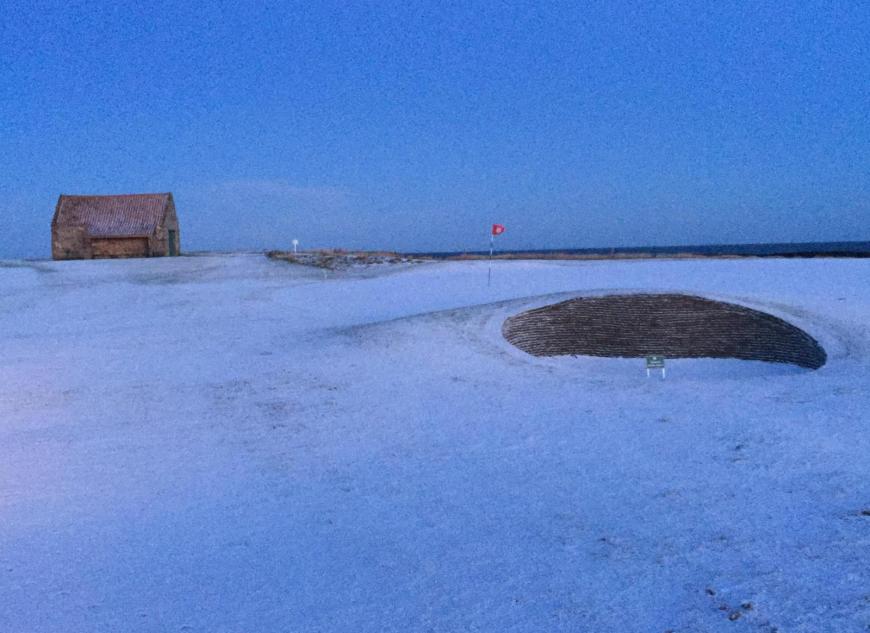
Frost and Snow - With a frost on the ground, play will be delayed slightly but will be firm and fast first thing. You may think it’s madness to want to play in snow, but a few people do and others ask at the courses. Usually, these are tourists who have happened to have booked ahead and been unlucky. “Golfers are mad” was mentioned again.
Fog - Each course had a point along the first fairway for visibility. A point that if not visible from the first tee then you couldn’t play. North Sea coasts are prone to advection fogs, a sea fret or haar. Inland courses will also suffer from radiation fog, but this mostly burns away through the morning in the sunshine. That can be a frustrating wait often with the promise of a glorious day.
Lightning - Of course, the main concern on a golf course is lightning. In the US with the extra humidity and warmth, you get more energy for convection and huge electric thunderstorms. Here in the UK, we can see lightning strikes from convective elements embedded in active frontal bands but usually its thundery showers to watch for, or the clusters of thunderstorms that march up from the south in warmer, more humid spells. Each course has a hooter, a warning signal as being the highest point on a generally flat open space with a long metal stick in your hand is not ideal when lightning is nearby.
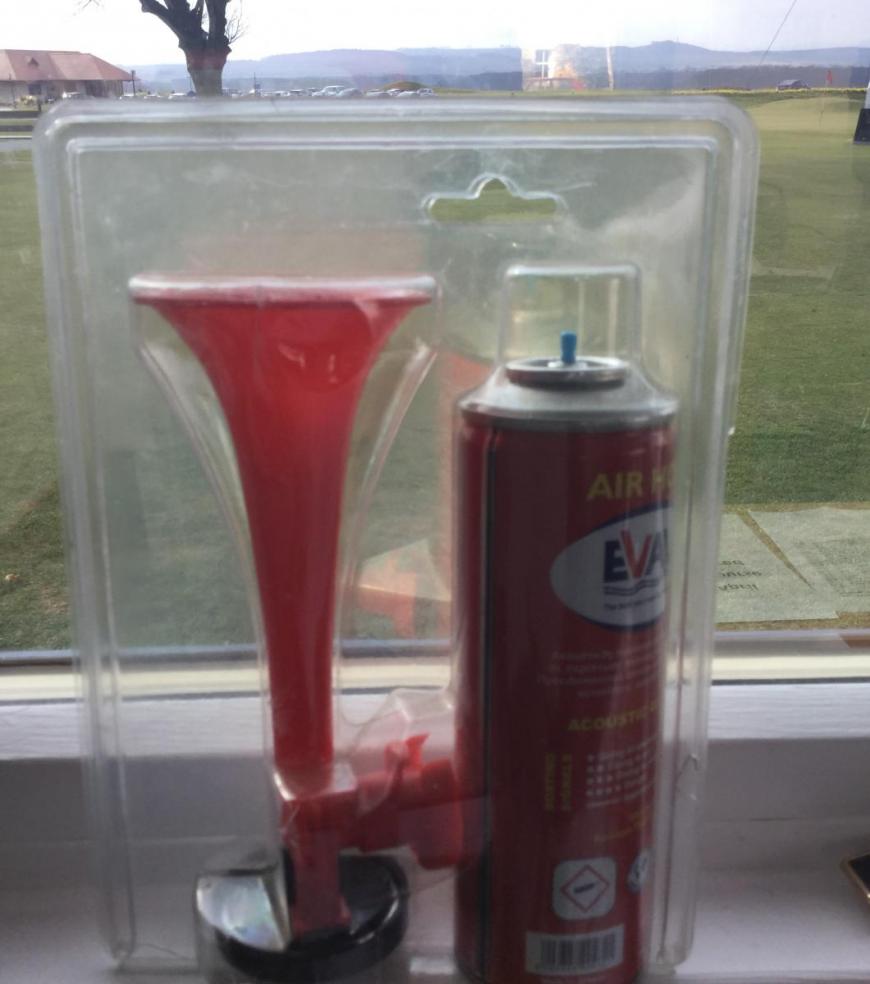
The players have all this to think about, but it is the course managers and greenkeeping staff putting in huge amounts of work to keep the course playable and in tip-top condition when the weather may have other ideas. This varies from too much rain, not enough rain and drought conditions. Cold, frost and snow to heat and ongoing sunshine with the lack of rain. The winds blowing sand about, never mind divots and everyday wear and tear.
The Greenkeepers
The weather can, at times, double or triple a greenkeepers work. Early starts or late finishes are needed to adapt to, avoid or combat the current weather conditions. There are many blogs about green keeping work, the busy ongoing maintenance happening in the background. When I read a couple there were lots of new phrases which I had to ask Paul at Dunbar about. There is the obvious cutting the grass and divot repairs which hopefully golfers are assisting with on their way round. The bunkers need looking after, especially after stormy wild weather. Fairways will become worn, tees needing dressing and general re-seeding or other repairs. There’s not just one type of grass out here, it’s a finely tuned mixture and irrigation is a big job too.
2018 saw two episodes of extreme weather; the Beast from the East, which brought weeks of linger snow to the east coast and south. Then in the summer, across the UK there was the heat and lack of rain for months. The recovery from the scorching and drought was slow and prolonged, with a few areas still weak even now.
The playing seasons appear to be slipping, with play often able to continue beyond October, and away from blips like the warmth in February 2019, there can be late frosts into April.
Cutting - A wet cut, Paul explained it was like trying to cut a wet piece of paper, the grass can go all ragged. Just as you wouldn’t ideally cut your own lawn when wet, it’s not great for the grass but the golf courses don’t have that much leeway. On the east coast, it’s usually drier than the west but when the sea fret or haar rolls in, the thick fog makes everything damp. The grass can be brushed up or just cut a bit later in the day, often when the dew has burned away.
Thinning - With mixed weather, rain and shine the rough will shoot up, not ideal if your ball strays slightly. These areas will be thinned out and would make the course slightly more forgiving if needed.
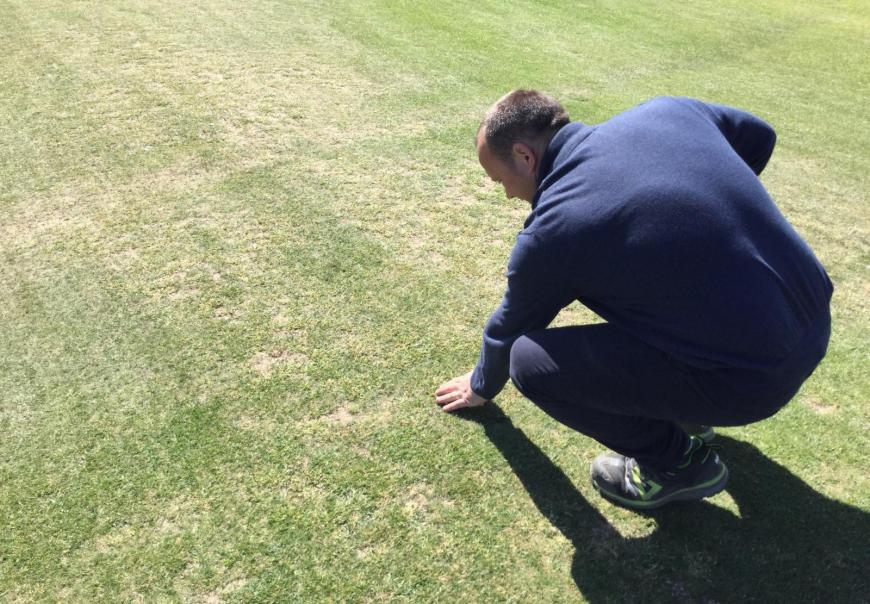
Seeding - Nature will do its part on the course with links courses having quite a mix of grasses. There is a lot of assistance given to the mix and spread of the seeds. Meadow grass and higher stems which need cutting down. Dunbar has fescue, a key grass for links courses. It is quite an old style, has a good root and is salt tolerant. With any drought conditions, the shallower root grasses disappear first. Ryegrass can cause disturbance to the ball roll, so work takes place to get a balance of fescue and brown top bentgrasses. The wind helps too. Of course, the seeding and germination need water, hopefully, well-timed rain. There are plenty of jobs to be done on the course so if watering isn’t one of them it frees up workers. Sand is added (dressing) to firm up the ground and help drainage.
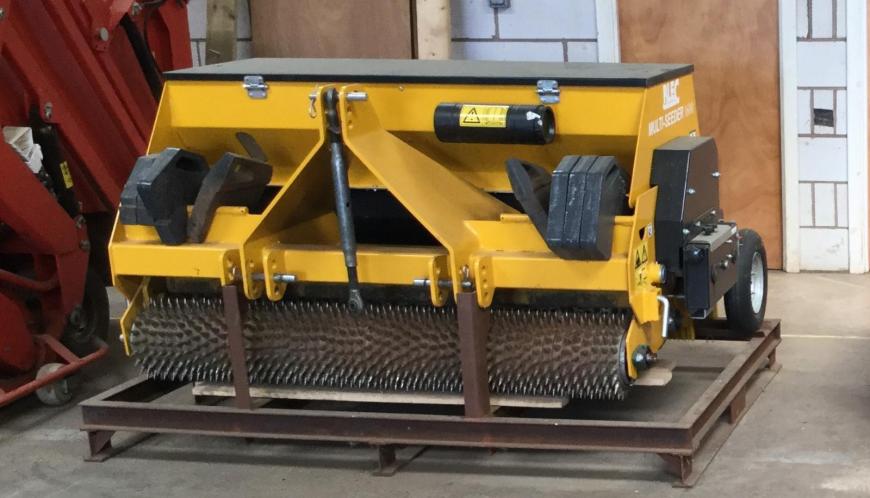
There is plenty of extra work before any Championship golf.
Build up to the Scottish Open 2018 Gullane “Things were getting very, very dry on the fairways on courses 2 and 3 even though we were watering these fairways once per week with the travelling sprinklers. Thankfully the torrential rain last Friday combined with a shower or two on Sunday prevented any grass cover loss. “
Later in the summer, there were green greens but brown fairways as the grass burnt off. By early winter there is hardly any grass growth, so any damage won’t recover. The winter greens come in and pathways change.
Bunkers - Links bunkers are steeper to keep the sand in. It often still manages to blow out and needs raking back in or replacing with bought in sand. Dunbar uses a heavier shell mix sand, to try to stop it blowing out. Inland course can have wider shallow more open bunkers.
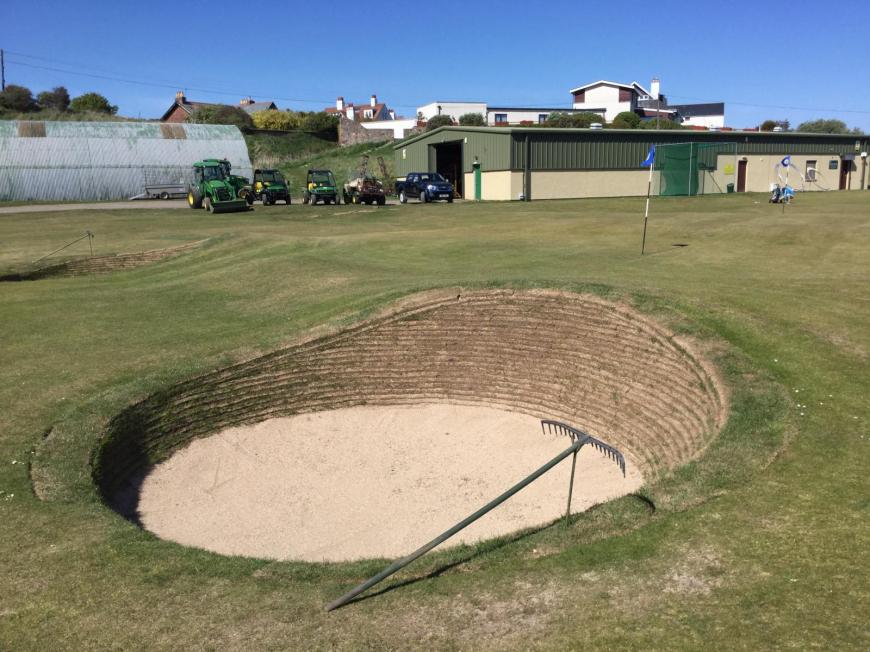
Gullane “Bunker sand blowout was a major issue for us and although we managed to get most of the bunkers sorted. We attempted to have another go at the bunker sand levels, but the wind had picked up again which stopped us from topping levels up. “
St Andrews “staff watered the sand in an attempt to prevent sand loss in bunkers prior to forecast high winds.”
Watering- Heat stress leads to problems on the fairways, the greens and around the bunkers. Wetting agents are used to hold any moisture onto the ground and stop it just evaporating away or if the ground is hard after a long dry spell, the water can just run off and not soak in at all. The greens “need to keep moisture in them for playability and plant health”. The wetting agent is a bit like fairy liquid and binds to the soil particles. More irrigation systems are added and enhanced, with hand watering used at times for weak spots. Portable sprinklers will be out, helping divot recovery and the areas that have been seeded if the rainfall doesn’t appear.
“you water to keep the grass alive, no more, not to feed it”
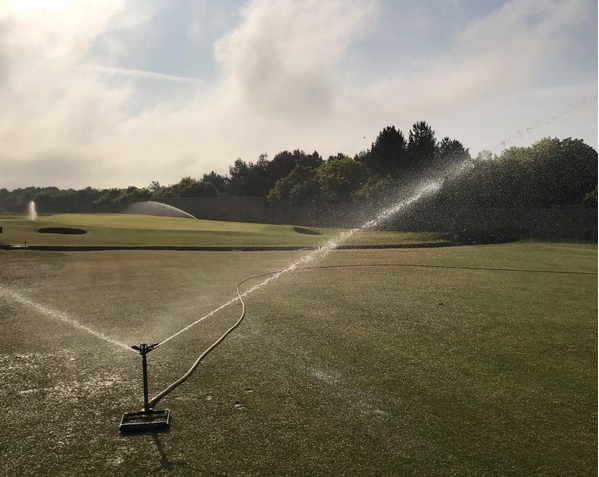
“You never want to over-irrigate a links golf course so that it that it begins to soften, you want it to be firm and fast” Jacky Montgomery Director of Golf Dunbar
Gullane “The wear and tear caused by having both the Men’s and Ladies Scottish Opens was surprising. I did worry about the first half of that fairway because we struggled to get water to it on many days during the heat wave during the tournament weeks, but it has bounced back extremely well.”
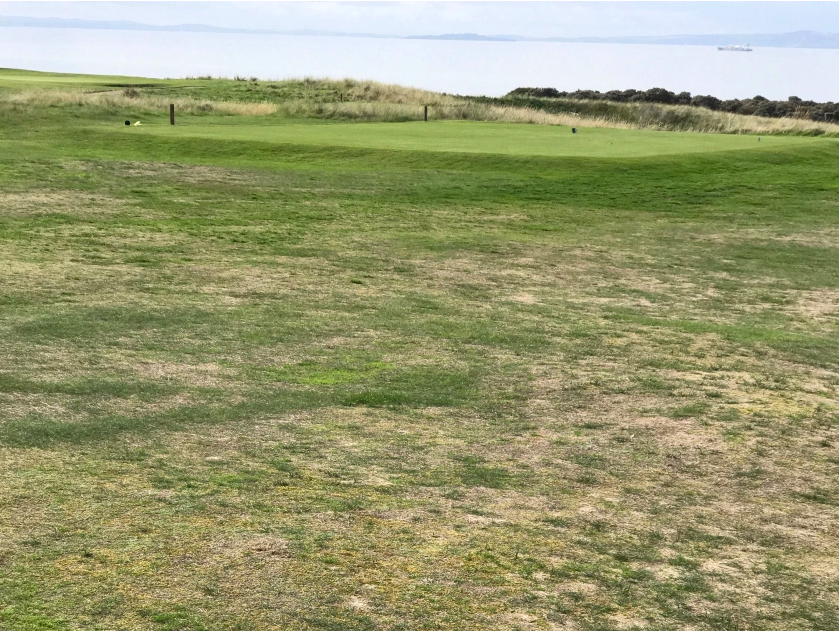
Plenty of seeding was needed after the championships during the heat of the 2018 summer. The winds along the coasts also dry out the course, at any time of year.
Rainfall
Both courses keep rainfall records. Gullane with an unceremoniously placed SEPA rain gauge and Dunbar with a plastic vessel on a fence. Neither makes me feel that comfortable about the accuracy of the recordings, after having read official advice about collecting rainfall data, but they will give a theme over the months and years.
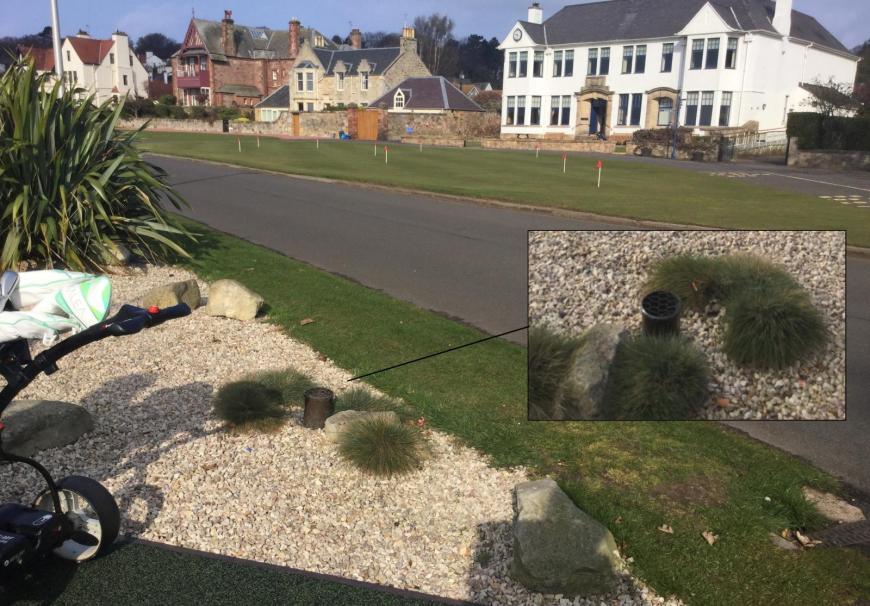
The Gullane rainfall data gets sent off to the Met Office/Environmental Protection Agency with records for many years. The network of rain gauge data is available for England and Scotland, so you can see any local data online.

Rain Radar- where the rain is right now.
Everyone thinks their course has a microclimate, which we in the weather forecasting business could take kindly that no-one is expecting the forecast to get it spot on as there are special conditions where they play. Or just that the golfers are saying the app or forecast doesn’t get it right. At least the Netweather radar shows a real picture of where the rainfall is and you can add on the lightning strikes, to see the progress of thunderstorms too. Building up a picture of how the showers and frontal rain bands behave on approach to your location will just come with experience and a lot of time spent on the course.
Many thanks to Dunbar Golf Course and Gullane Golf Course, to Stuart Bendoris, Alan Gray and Paul Armour, Jacky Montgomery for their time and weather/golf chat
https://gullanegreens.com/ Stewart Duff Course Manager Gullane
https://dunbarcoursemanagerblog.wordpress.com/ Paul Armour Dunbar
Environment Agency Rain Gauges England
Loading recent activity...